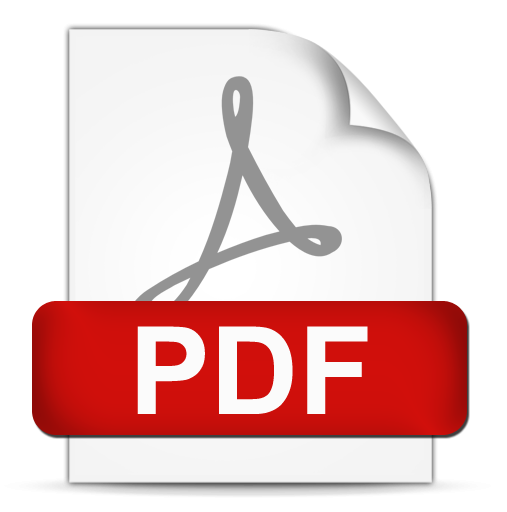Luka Gigitan Buaya: Tata Laksana Berkesinambungan dari Pra-Rumah Sakit ke Rumah Sakit
 Abstract Views:
44 times
Abstract Views:
44 times
 PDF Downloads:
19 times
PDF Downloads:
19 times
Abstract
Abstract—East Kalimantan Province is a tropical region with rivers that serve as habitats for various wildlife, including crocodiles. The province has a relatively high incidence of human–crocodile conflicts. Crocodile bites often result in extensive wounds with a high risk of infection. Hypovolemic or septic shock represents a medical emergency that requires careful attention in such cases. Crocodile bite injuries can significantly reduce quality of life due to tissue damage, chronic pain, and impaired limb function, leading to limited activity and decreased social participation. Prompt, appropriate, and continuous management is essential to prevent complications and mortality.
Keywords: crocodile bite, continuity of care, wound
Abstrak—Provinsi Kalimantan Timur merupakan daerah tropis dengan sungai yang menjadi habitat dari banyak satwa, salah satunya buaya. Kalimantan Timur memiliki konflik antara buaya dan manusia yang cukup tinggi. Luka gigitan buaya sering kali menyebabkan luka yang luas dengan risiko infeksi yang cukup tinggi. Keadaan syok hipovolemik atau syok septik merupakan kegawatdaruratan yang perlu diperhatikan pada kasus gigitan buaya. Luka gigitan buaya dapat menurunkan kualitas hidup akibat kerusakan jaringan, nyeri kronis, dan gangguan fungsi anggota tubuh yang berdampak pada keterbatasan aktivitas serta penurunan partisipasi sosial. Pertolongan yang cepat, tepat, dan berkesinambungan merupakan modalitas utama dalam pencegahan komplikasi dan kematian.
Kata kunci: gigitan buaya, luka, perawatan berkesinambungan
Downloads
References
Ardiantiono A, Henkanaththegedara S, Sideleau B, Sheherazade S, Anwar Y, Haidir I, et al. Integrating social and ecological information to identify high-risk areas of human-crocodile conflict in the Indonesian Archipelago. Biological Conservation. 2023;1:280.
Mulyadi, Trilaksono W, Mampuni, Kurniawan AJ. Kepadatan populasi buaya muara Crocodylus porosus Schneider, 1801 di Delta Mahakam, Kalimantan Timur. Lembaga Ilmu Pengetahuan Indonesia. 2019.
Mazingi D, Mbanje C, Muguti GI, Chitiyo ST. A case report of a bite from the nile crocodile managed with regional anesthesia. Wilderness Environ Med. 2019;30(4):441–5.
Venter M, Plastic FC, Sa RS, Hospital M. African nile crocodile bite of the forearm : a case report. 2020;14(2):102–7.
Mitchell KB, Kotecha VR, Chandika A. Bush animal attacks: management of complex injuries in a resource-limited setting. World Journal of Emergency Surgery. 2011;6(1):43.
Goh Boay Heong E, Ma S, Kk T, Paul A. Crocodile bite, a toil and snare of its own complexity -a single deep bite with multiple rippling impacts: a case report. Manipal Alumni Science and Health Journal. 2024; 9(1): 06.
Caldicott DG, Croser D, Manolis C, Webb G, Britton A. Crocodile attack in australia: an analysis of its incidence and review of the pathology and management of crocodilian attacks in general. Wilderness Environ Med. 2005;16(3):172–3.
Nutbeam T, Boylan M. ABC of Prehospital Emergency Medicine. London: BMJ Books. 2013.
Gwinnutt CL, Driscoll P. Transfer to definitive care. In: advanced trauma life support. 9th ed. Chicago: American Collage of Surgeons. 2018:242–6.
Blom A, Warwick D, Whitehouse M. Apley & solomon’s system of orthopaedics and trauma. Florida: CRC Press. 2017.
Carver DC, Kuehn SB, Weinlein JC. Role of systemic and local antibiotics in the treatment of open fractures. Orthop Clin North Am. 2017;48(2):137–53.
Chaudhry SB, Veve MP, Wagner JL. Cephalosporins: a focus on side chains and β-lactam cross-reactivity. Pharmacy (Basel). 2019;16.
Alelign D, Tena T, Tessema M, Kidanewold A. Drug-resistant aerobic bacterial pathogens in patients with crocodile bite wounds attending at arba minch general hospital, southern ethiopia. Int J Gen Med. 2022;15:8669–76.
Chate S, Dardi C, Watwe S, Khare AS. Multidrug resistant pseudomonas aeruginosa from wound & pyogenic infections. Natl J Integr Res Med. 2015;6(2):6–9.
Hassel B. Tetanus: pathophysiology, treatment, and the possibility of using botulinum toxin against tetanus-induced rigidity and spasms. Toxins (Basel). 2013;5(1):73–83.
Zhao JC, Yu JA, Shi K, Jin ZH, Niu ZH. Treatment of an open fracture wound with skin graft dressings (PELNAC): A case report. Wounds. 2011.
Suprapto Putra IA. Update Tatalaksana Sepsis. Cermin Dunia Kedokteran. 2019;46(11):681–5.
White C, Green RA, Ferguson S, Anderson SL, Howe C, Sun J, et al. The influence of social support and social integration factors on return to work outcomes for individuals with work-related injuries: a systematic review. Journal of Occupational Rehabilitation. 2019;29(3):636–59.
Prang KH, Berecki-Gisolf J, Newnam S. Recovery from musculoskeletal injury: the role of social support following a transport accident. Health Qual Life Outcomes. 2015;13:97.

This work is licensed under a Creative Commons Attribution-ShareAlike 4.0 International License.
- Articles published in Keluwih: JKK are licensed under a Creative Commons Attribution-ShareAlike 4.0 International license. You are free to copy, transform, or redistribute articles for any lawful purpose in any medium, provided you give appropriate credit to the original author(s) and the journal, link to the license, indicate if changes were made, and redistribute any derivative work under the same license.
- Copyright on articles is retained by the respective author(s), without restrictions. A non-exclusive license is granted to Kluwih: JKK to publish the article and identify itself as its original publisher, along with the commercial right to include the article in a hardcopy issue for sale to libraries and individuals.
- By publishing in Keluwih: JKK, authors grant any third party the right to use their article to the extent provided by the Creative Commons Attribution-ShareAlike 4.0 International license.






